Table of Contents
The Ecuadorian flag, also known as the flag of Ecuador, holds a significant place in the nation’s history and culture. With its vibrant colors and meaningful symbolism, it represents the Ecuadorian identity and heritage. In this article, we will delve into the intriguing aspects of the Ecuador flag, its design, historical background, and the symbolism behind its elements.
The Ecuador flag features three horizontal stripes: yellow at the top, blue in the middle, and red at the bottom. Above the blue stripe and at the center of the flag is the Ecuadorian coat of arms. The yellow color symbolizes the country’s resources and fertile soil, blue represents the sea and sky, and red stands for the blood shed by the heroes who fought for Ecuador’s independence. The coat of arms carries a further depth of symbolism and historical significance, encompassing the country’s journey and its rich cultural heritage.
Ecuador Flag: Colors and Symbolism
- The flag of Ecuador features three horizontal stripes of yellow, blue, and red, with the coat of arms in the center when used for official purposes.
- The yellow color symbolizes the crops and the fertile soil of the country, as well as the country’s sunshine.
- The blue represents the ocean and clear skies that bless Ecuador.
- The red stands for the blood spilled by the heroes who achieved independence for the nation.
- The coat of arms, when present, showcases the historical and geographical features of Ecuador, including its majestic mountains and rivers.
- The flag’s design reflects the nation’s aspirations, cultural heritage, and unity among the Ecuadorian people.
Flag of Ecuador
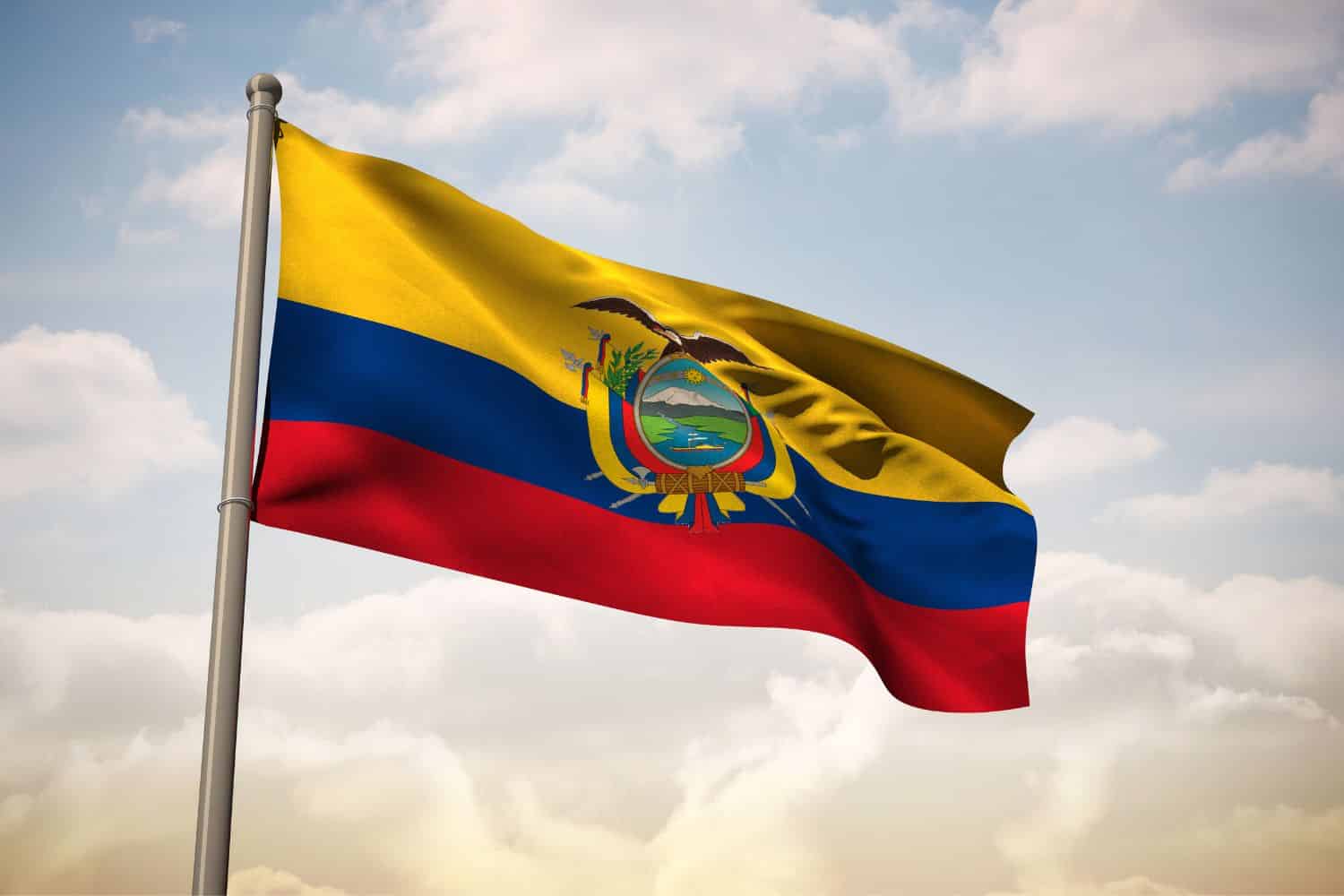
The flag stands as a powerful symbol that encapsulates the cultural significance and spirit of the nation. Its design consists of three horizontal bands yellow, blue, and red. The yellow band symbolizes the country’s rich resources and the fertility of the land. The blue represents the sea and sky, while the red denotes the blood shed for freedom and independence. At the center of the flag is the Ecuadorian coat of arms, which is a representation of the beauty and diversity of the country.
The history of the flag is intertwined with Ecuador’s rich heritage and struggle for independence. Adopted on September 26, 1860, the flag represents the unity and aspirations of the Ecuadorian people.
Beyond its aesthetics, the flag from Ecuador carries deep symbolic meanings. The colors reflect the values and aspirations of the Ecuadorian people, symbolizing richness, freedom, and bravery. The coat of arms provides a detailed reflection of the country’s geography, history, and culture. It embodies Ecuador’s cultural heritage and serves as a reminder of the nation’s resilience and unity.
National Flag Etiquette and Protocol
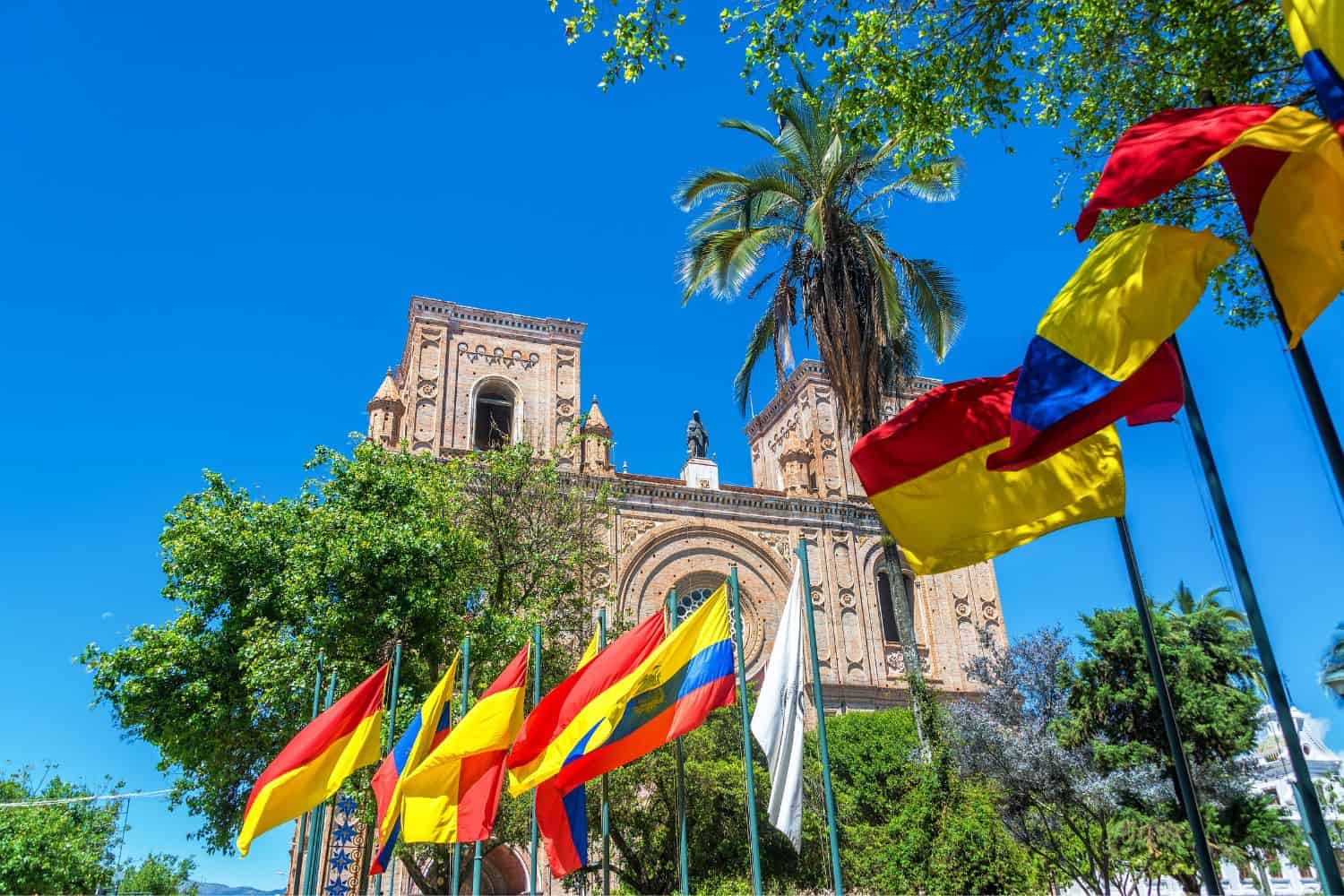
Respecting the proper usage and display of the Ecuadorian flag is of utmost importance. Understanding flag etiquette is essential, especially during national events and ceremonies. Learn about the protocols governing the handling, hoisting, and lowering of the flag. Discover the appropriate procedures for retiring or handling damaged flags, ensuring they are accorded the respect they deserve.
- Proper Handling: The Ecuadorian flag should be handled with care and respect, ensuring it is not allowed to touch the ground or floor. It should be held upright and not dragged.
- Hoisting and Lowering: When hoisting the flag, it should be raised briskly and lowered ceremoniously. It is customary to hoist the flag at sunrise and lower it at sunset, although this may vary depending on the occasion or specific guidelines.
- Displaying the Flag: The Ecuadorian flag should be displayed with the yellow stripe on top, followed by the blue and red stripes. It should be flown freely and not entangled or obstructed.
- Half-Staff: Lowering the flag to half-staff is a gesture of mourning or respect. This should be done on specific days of remembrance or when directed by authorities to honor national tragedies or the passing of significant figures.
- Flag Retirement: When an Ecuadorian flag becomes damaged, torn, or worn out, it should be retired in a dignified manner. This can involve burning it in a respectful and solemn ceremony, following appropriate guidelines and local regulations.
- Flag Size and Placement: The size of the Ecuadorian flag displayed should be proportionate to the size of the flagpole or display area. It is recommended to consult local guidelines or authorities for specific rules regarding flag size and placement.
- Respectful Disposal: If a flag cannot be retired through burning, it should be disposed of in a respectful manner. This can involve burying it or handing it over to authorized organizations that specialize in flag disposal.
Interesting Facts and Trivia
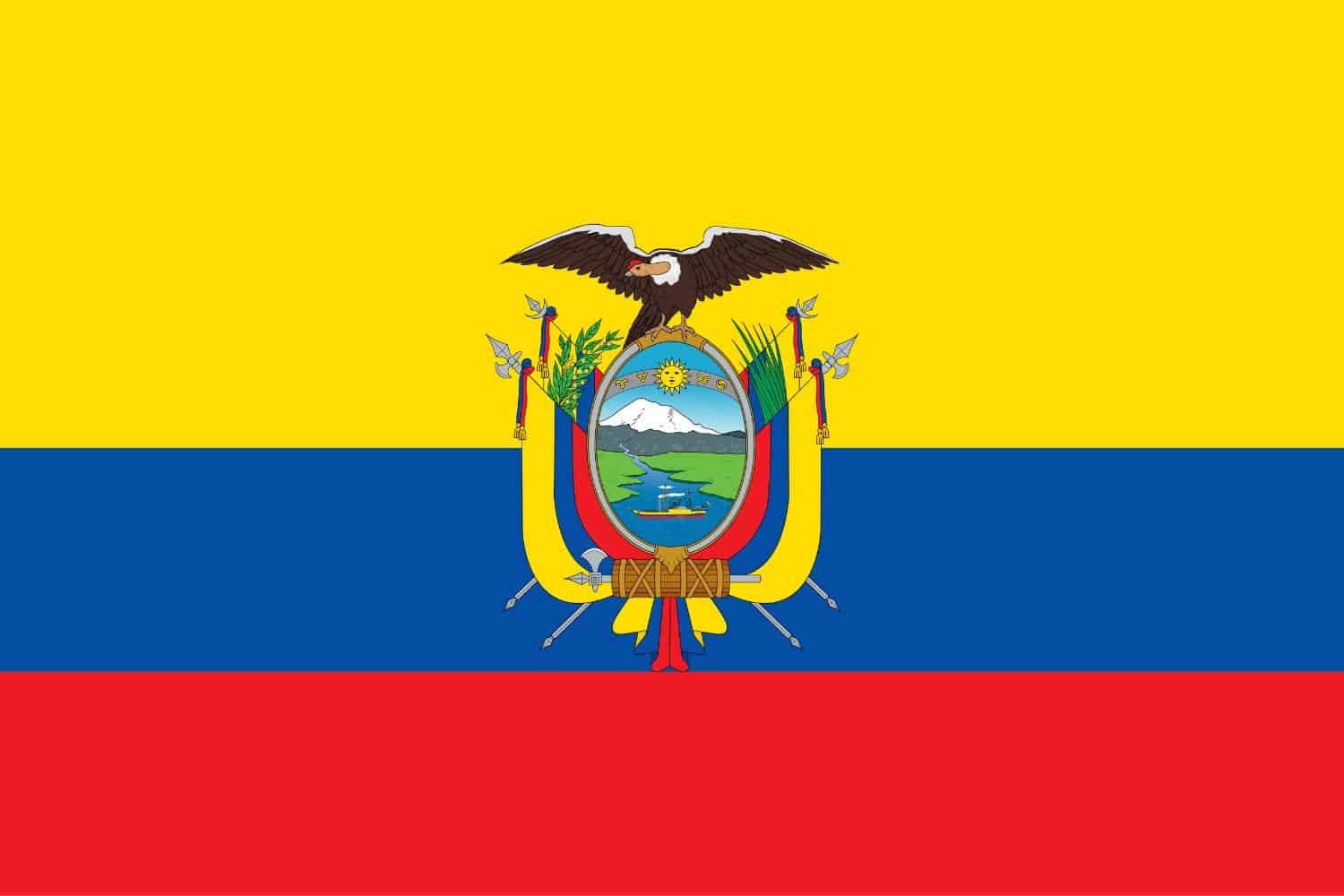
Embark on a journey of fascinating facts and lesser-known trivia about the Ecuadorian flag. Discover unique features within the flag’s design that hold hidden symbolism. Uncover stories of famous incidents or events involving the flag that have left an indelible mark on the nation’s history and identity.
Rich Tapestry of History
- 1835: The current flag of Ecuador was adopted on September 26, symbolizing the unity and aspirations of the Ecuadorian people.
- Colors and Symbolism: The yellow color represents the country’s richness and fertility, the blue symbolizes the sea and the sky, and the red represents the blood shed for freedom and independence.
- Coat of Arms: Featured at the center of the flag, the Ecuadorian coat of arms showcases the majestic Andes mountains, the Guayas River, a steamboat symbolizing progress, and more elements significant to the nation’s heritage.
- National Identity: The flag embodies Ecuador’s rich history, cultural heritage, and the nation’s ongoing pursuit of unity, prosperity, and freedom.
These historical facts highlight significant moments in the history of the Ecuadorian flag, showcasing its role in shaping Ecuador’s national identity and symbolizing its struggles and aspirations throughout the years.
Flag-Related Symbols and Emblems
A flag is not alone in representing the nation’s identity. Explore additional national symbols and emblems closely associated with Ecuador, understanding their significance and how they relate to the flag. Delve into their historical and cultural roots, further enriching your understanding of Ecuador’s heritage. It’s easy to travel and make an Ecuador tour to visit the country’s best destinations.
Symbolisms of the Ecuador Flag
The flag of Ecuador holds several symbolic elements that represent the nation’s history, values, and aspirations. Here are the symbolisms of the Ecuador flag presented in itemized form:
- Yellow Color: Represents the country’s fertility and the richness of its crops and land.
- Blue Color: Symbolizes the sky, the Pacific Ocean that bathes the coasts of Ecuador, and the beauty of its rivers.
- Red Color: Represents the blood shed by those who fought for freedom and the valor of the Ecuadorian people throughout history.
- Coat of Arms: Situated in the center of the flag, it includes a representation of Mount Chimborazo, the Guayas River, and a ship symbolizing the first steamship built in South America. The condor on top signifies power, greatness, and strength.
- Flag’s Design: Reflects Ecuador’s aspirations, cultural heritage, and unity among the Ecuadorian people.
- National Identity: The flag serves as a powerful symbol that unifies the Ecuadorian people, reminding them of their shared heritage and cultural identity.
- National Aspirations: Through its design and elements, the flag embodies the aspirations and values of the Ecuadorian nation, including fertility, freedom, unity, and courage.
These symbolisms in the flag contribute to the country’s sense of identity and pride, reflecting its historical journey and cultural significance.
Flags of Similar Countries or Regions
Examining the flags of neighboring countries or regions can provide intriguing insights. Compare and contrast the flags, exploring similarities in design, colors, or symbolism. Uncover historical and cultural connections between flags, shedding light on shared influences or distinctive identities.
Ecuadorian Flag vs Colombian Flag
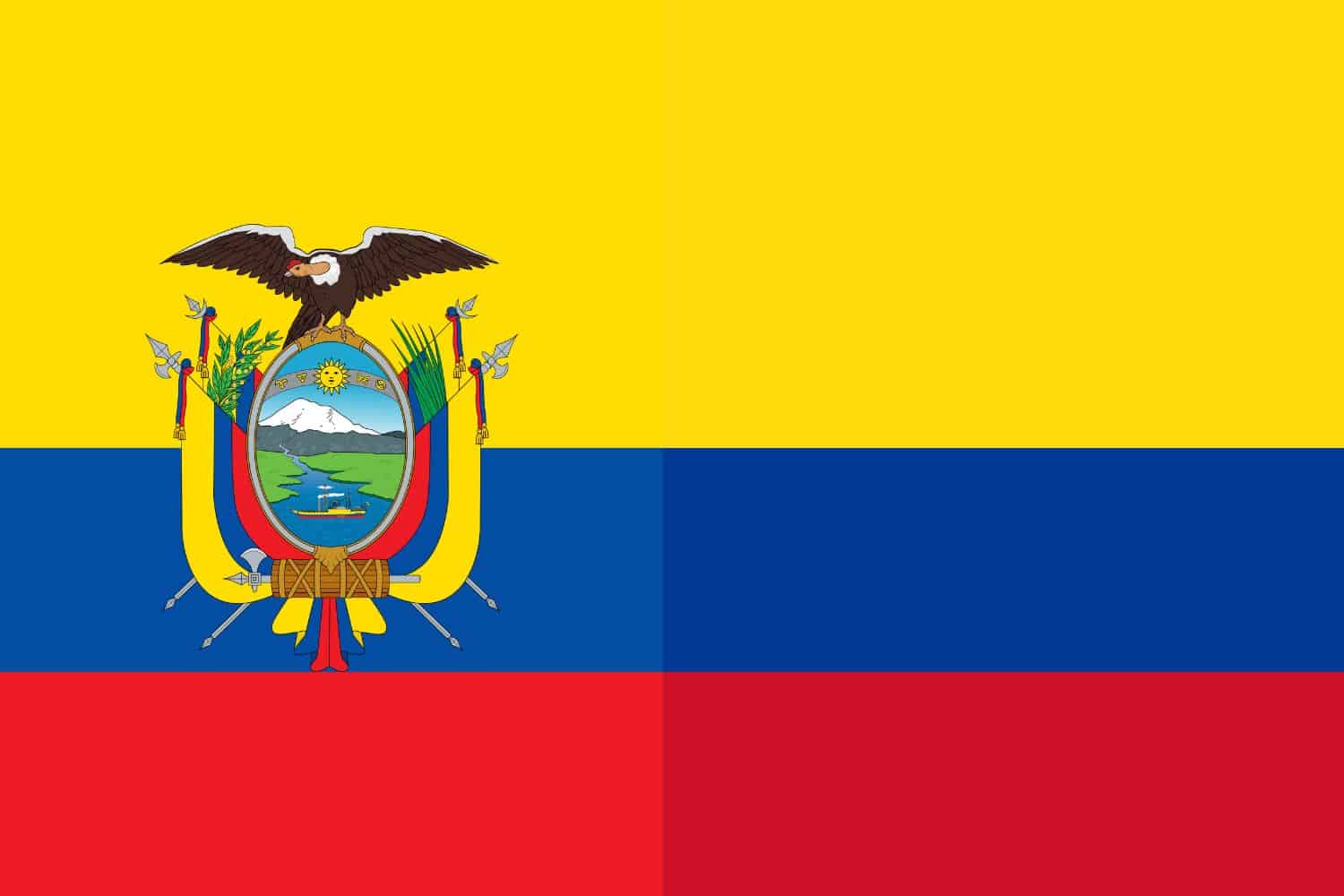
Similarity: Both flags feature yellow, blue, and red horizontal stripes.
Difference: The Ecuadorian flag includes the coat of arms in the center of the blue stripe, while the Colombian flag does not have any emblem or symbol.
Ecuadorian Flag vs Venezuelan Flag
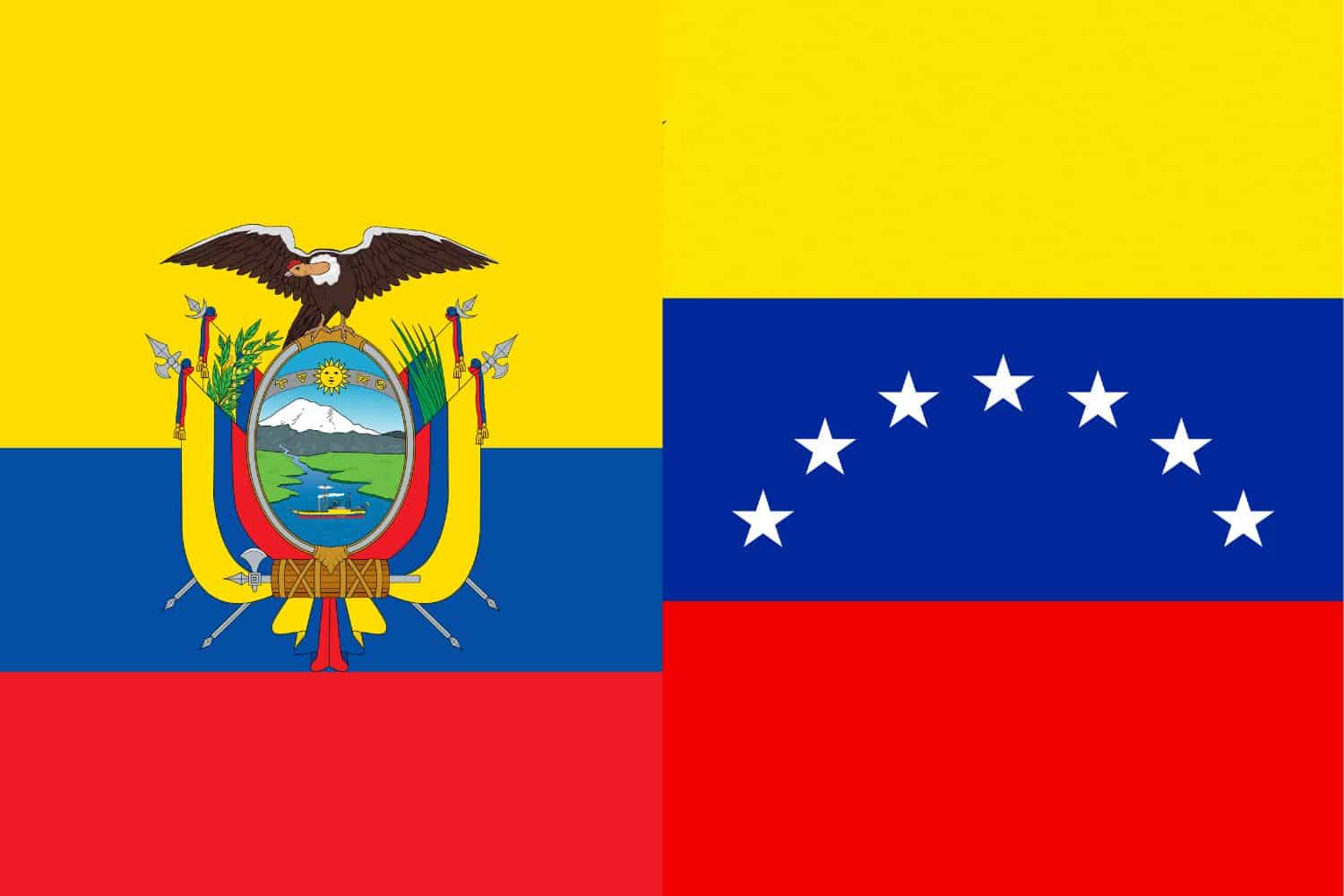
Similarity: Both flags feature yellow, blue, and red horizontal stripes.
Difference: The Venezuelan flag includes a set of seven white stars in an arc in the blue stripe, and the coat of arms on the top left corner of the yellow stripe.
Ecuadorian Flag vs Peruvian Flag
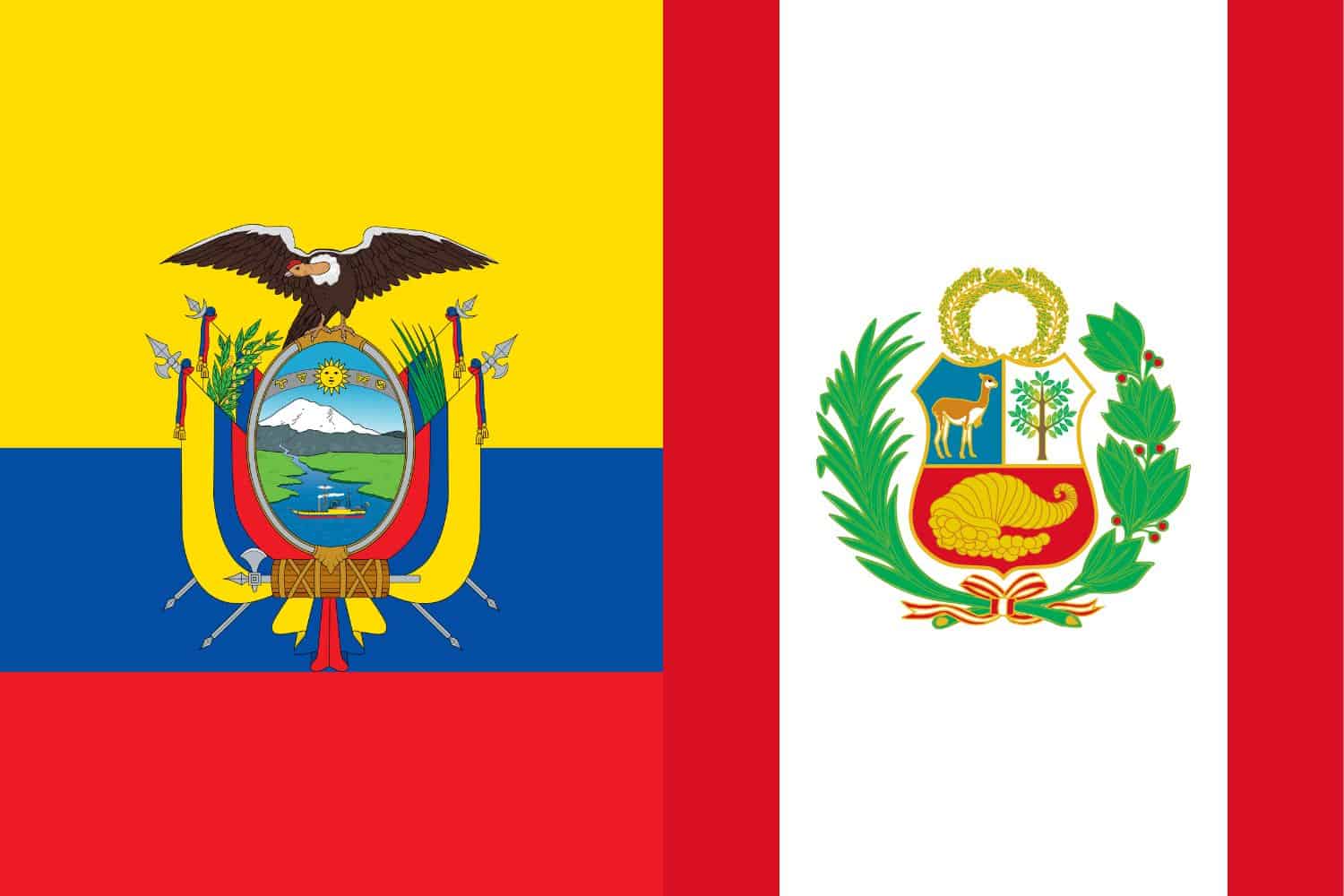
Similarity: Both flags have red as a predominant color.
Difference: The Peruvian flag consists of two vertical red stripes on each side with a white field in between. In the center of the white field, it sometimes displays the national coat of arms.
Ecuadorian Flag vs Bolivian Flag
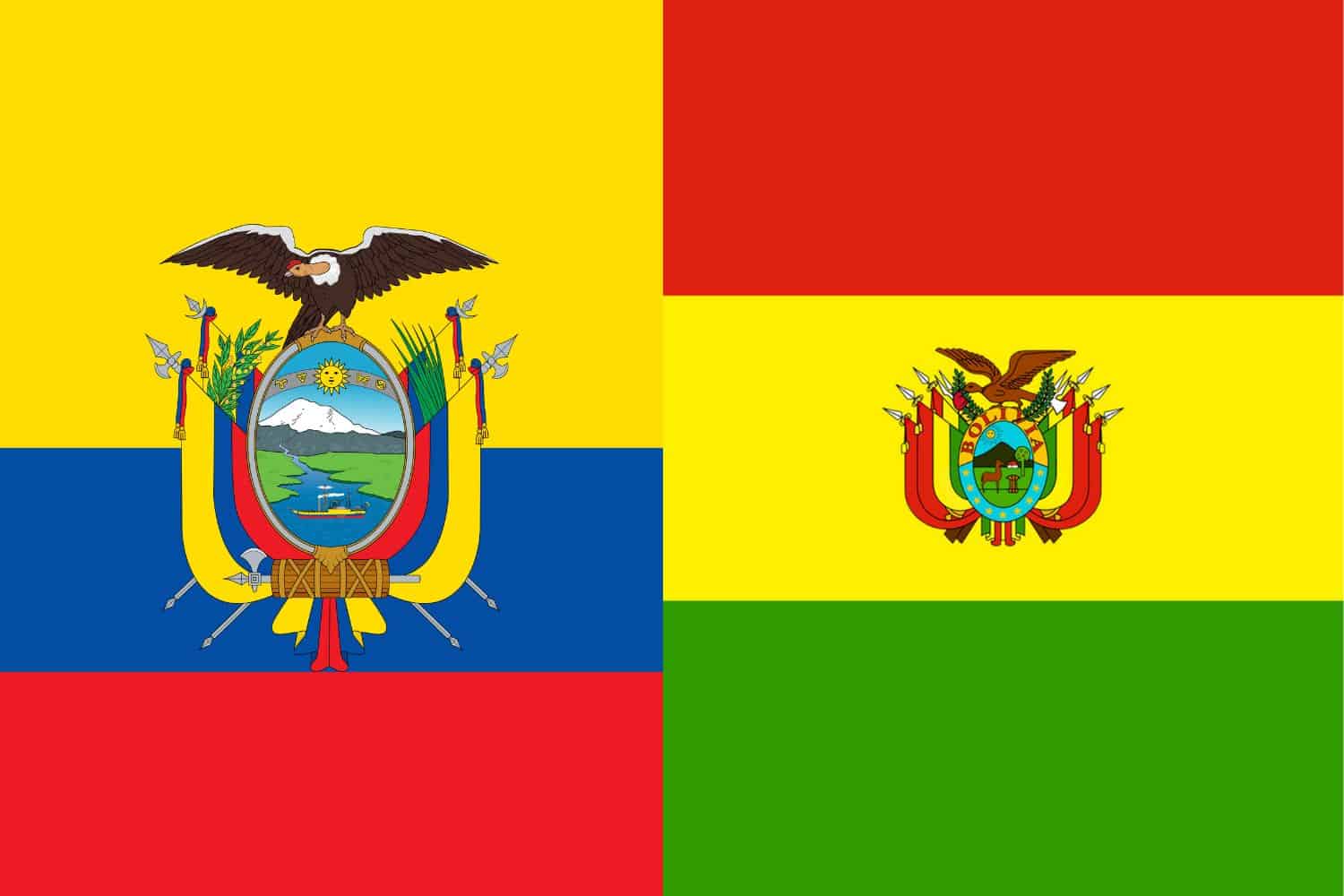
Similarity: Both flags feature red, yellow, and green horizontal stripes.
Difference: The Bolivian flag includes the Bolivian coat of arms in the center of the yellow stripe, while the Ecuadorian flag’s coat of arms is in the center of the blue stripe.
Ecuadorian Flag vs Chilean Flag
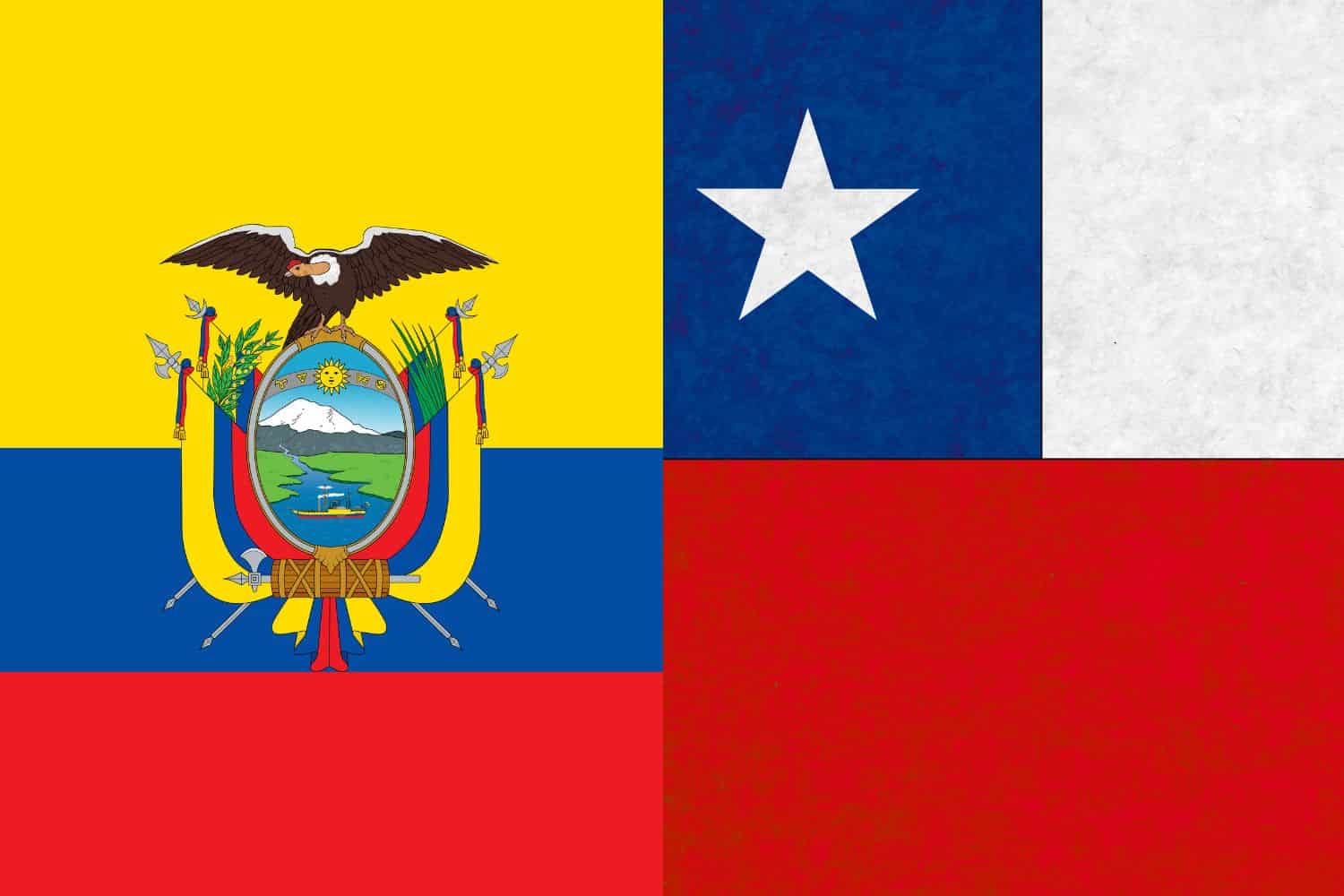
Similarity: Both flags have red and blue as part of their design.
Difference: The Chilean flag consists of a white and red horizontal stripe with a blue square in the upper hoist-side corner bearing a white five-pointed star in the center.
Ecuadorian Flag vs Argentinian Flag
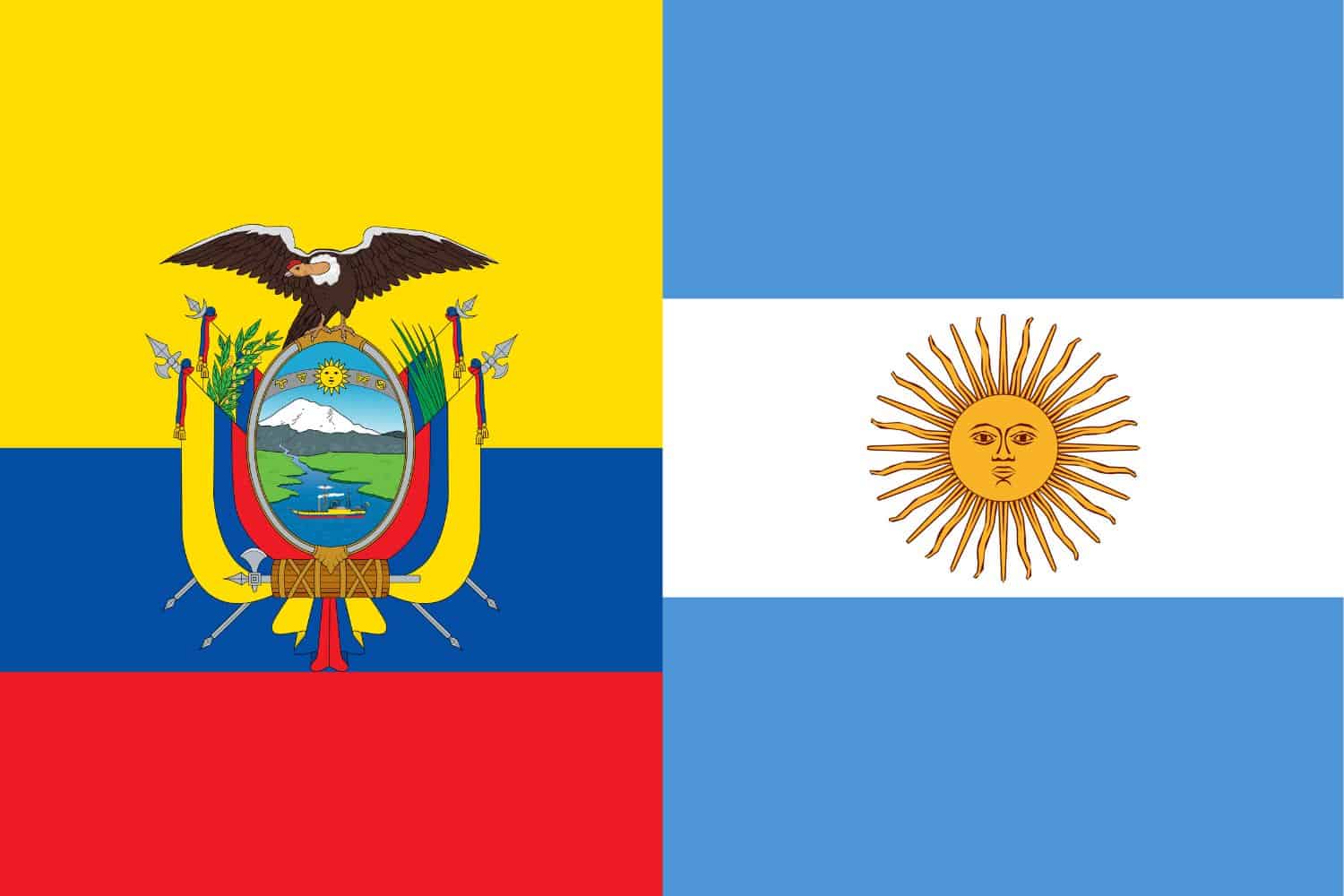
Similarity: Both flags feature blue and white colors.
Difference: The Argentinian flag consists of three horizontal bands (blue, white, blue) with a sun in the center of the white stripe, while the Ecuadorian flag has yellow, blue, and red horizontal stripes with a coat of arms in the center of the blue stripe.
Frequently Asked Questions (FAQs)
Discover answers to common questions related to the Ecuador flag picture. From its historical origins to the symbolism behind its elements, find concise and informative responses that address inquiries commonly posed by those curious about Ecuador’s flag.
What do the colors of the Ecuadorian flag represent?
The yellow represents the fertility of the country and its crops, the blue symbolizes the sky and the Pacific Ocean, and the red stands for the blood shed by those who fought for independence.
Is the Ecuadorian flag similar to other flags?
Yes, the Ecuadorian flag shares its three main colors (yellow, blue, and red) in horizontal stripes with the flags of Colombia and Venezuela due to their shared history in the Gran Colombia.
What is the significance of the coat of arms on the Ecuadorian flag?
The coat of arms showcases an Andean condor, a symbol of power and strength, above a shield containing Mount Chimborazo and the Guayas River, representing historical and geographical landmarks. Other elements include a sun, a steamboat, and more, representing various historical and symbolic aspects of Ecuador.
Is the coat of arms present on all versions of the Ecuadorian flag?
No. The state flag includes the coat of arms, but the civil flag (or the flag commonly used by citizens) does not feature the coat of arms.
When was the Ecuadorian flag officially adopted?
The flag was officially adopted on September 26, 1860.
Who designed the Ecuadorian flag?
The design of the Ecuadorian flag is attributed to General Eloy Alfaro and is based on the flag of Gran Colombia, the former republic that Ecuador was a part of alongside Colombia and Venezuela.
Are there any protocols or etiquette related to the Ecuadorian flag?
Like many nations, Ecuador has protocols for displaying and respecting its national flag. For instance, the flag should not touch the ground, and when displayed with other flags, it should be raised first and lowered last.
How is the Ecuadorian flag displayed on national holidays?
On national holidays, public buildings and institutions prominently display the flag, often accompanied by various national ceremonies and events.
What is the difference between the Ecuadorian flag and the Colombian flag?
While both flags have horizontal stripes of yellow, blue, and red, the Ecuadorian flag has a broader yellow stripe and features a coat of arms in its official state version. The Colombian flag lacks any emblems.
How often is the flag with the coat of arms used compared to the one without it?
The flag with the coat of arms is used primarily by government institutions and for official purposes, while the flag without the coat of arms is more commonly used by the general public and for general display.
More About Ecuador
[the-post-grid id=”50351″ title=”Ecuador Main page”]
